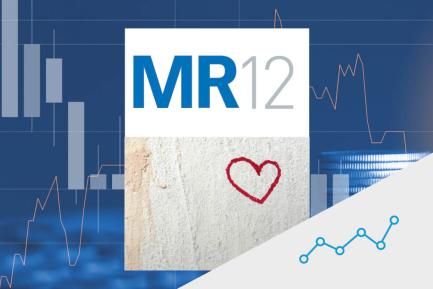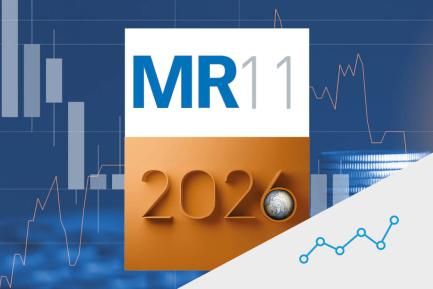
Uncertainty over economic policy continues to steer investor mood
The truce in the tariff tensions between Washington and Beijing ended up fuelling a renewed risk appetite in May. However, the optimism was gradually overshadowed as the month progressed by the predictable fiscal deterioration in the US and other developed economies, as well as by the persistent volatility in Trump’s trade policy.
The markets, torn between optimism about the trade truce and concern over the US’ fiscal deterioration
The truce in the tariff tensions between Washington and Beijing ended up fuelling a renewed risk appetite in May, backed by economic data which confirmed the resilience – for now – of economic activity and the progress of disinflation, both in the US and in Europe. However, the optimism was gradually overshadowed as the month progressed by the predictable fiscal deterioration in the US and other developed economies, as well as by the persistent volatility in Trump’s trade policy. In this context, sovereign yields rebounded, while equity investors chose to view the glass as being half full, benefiting cyclical sectors in particular and allowing the US indices to wipe out the losses accumulated in the year to date. In the foreign exchange market, the dollar once again showed significant sensitivity, while in the commodities market the most noteworthy development was the fact that gold, which has recorded a significant appreciation this year, did not capitalise on the fiscal uncertainty.

The central banks remain cautious
The Fed chose to keep interest rates unchanged in May, waiting to assess the impact of the tariffs on prices and economic activity, although its chair Powell expressed concern over the growing risks of stagflation as a result of the trade tensions. The April data supported this approach: various measures of inflation and production prices slowed, while retail sales fell and consumer spending declined, although consumer confidence rebounded rapidly in May following the trade truce. The resilience of the US economy led investors to anticipate two rate cuts by the Fed this year in May, compared to the four that were being anticipated at the end of April. For the ECB, the swings were smaller: investors anticipated two further rate cuts in 2025 and the probability of a third fluctuated based on inflation expectations. Regarding the latter, the markets have been reflecting lower expectations since Liberation Day (anticipating a reduction to 1.5% in three years time), while consumers in the euro area in April were expecting a rebound (3.1% in three years time), in both cases influenced by the US tariffs.

The concerns over fiscal sustainability drove up sovereign yields
The passing of Trump’s tax reform by the House of Representatives, combined with Moody’s downgrading of the US’ credit rating (the latest agency to withdraw its triple A rating), served as catalysts for a sharp rise in rates in the month, even despite the reform being softened during its passage through Congress. The increase in the yield on Treasuries, however, was concentrated in the short segments of the curve due to the expectation of higher Fed rates. Fiscal tensions also took their toll in other markets: in Japan, they mainly affected longer-term yields, in a context marked by a gradual reduction of the central bank’s balance sheet. In the case of the United Kingdom, the government's limited fiscal margin also drove up longer-term yields. In the euro area, the rebound was more moderate: the curve remained flat and peripheral spreads narrowed, as part of a normalisation process following April’s risk-off movement and amid an improvement in risk appetite.

The foreign exchange market reflected the tension between trade and fiscal factors
The dollar showed two clear trends: first, strength at the beginning of the month due to optimism on the trade front and the resilience shown by the US labour market in April, and then weakness in the wake of Moody’s downgrade, the passing of the tax reform and the turbulence towards the end of the month in the China-US trade negotiations. The net result against the euro was a practically flat month, leaving a cumulative appreciation in the year to date of around 10%. The main beneficiary of the trade truce turned out to be the South Korean won, which was also favoured by the country's renewed political stability. The pound sterling, meanwhile, depreciated slightly due to the mixed economic data in the United Kingdom and doubts over the government’s fiscal plans. Among emerging currencies, those of Latin American countries showed divergent performance depending on their fundamentals and their exposure to global trade, with the Mexican peso appreciating after the trade truce between China and the US.

Equities, the main beneficiaries of the China-US trade truce
The increased risk appetite and the resilience of the economy benefited sectors typically linked to the business cycle (e.g. technology and industrial goods), which led the gains in the US and Europe, while more defensive ones, such as health and basic consumption, lagged behind. The US indices for large cap companies recovered the losses accumulated in the year, returning to positive territory. In Europe, the German, Italian and Spanish markets performed particularly well, while markets with a greater number of defensive companies, such as France, recorded more moderate advances. Emerging economies participated selectively in the rally. Mexico and Brazil performed particularly well, supported by their favourable domestic dynamics. Among the Chinese indices, the CSI 300 recorded more moderate gains, despite the monetary stimulus recently implemented, and reflected a degree of investor scepticism about its durability and impact on the country’s growth. The Hang Seng, meanwhile, posted higher gains driven by the tech sector. The rest of the Asian indices (Japanese, South Korean and Indonesian) did benefit to a greater extent from the US-China trade truce.

Mixed behaviour in commodities
The European benchmark gas price registered one of the biggest monthly gains due to the confluence of several factors: the progress made by the European Commission to eliminate the flow of Russian gas into the EU, the reduced supply from Norway due to maintenance works and failures in key infrastructure, as well as the fact that storage levels remain low. Oil showed more complex dynamics, with modest gains, as investors sought to balance greater optimism about global demand with signs that OPEC+ was considering further production increases in July (finally approved, and adding to the increases of more than 400,000 barrels already planned in June) and with a degree of optimism regarding the negotiations between the US and Iran on the latter’s nuclear programme. Among industrial metals, copper benefited from the optimism regarding global manufacturing activity. Among precious metals, meanwhile, gold remained flat, between the declining demand for safe-haven assets and fiscal concerns, while platinum recorded a sharp rise, driven by Chinese demand amid high gold prices and signs of depletion in current deposits.



